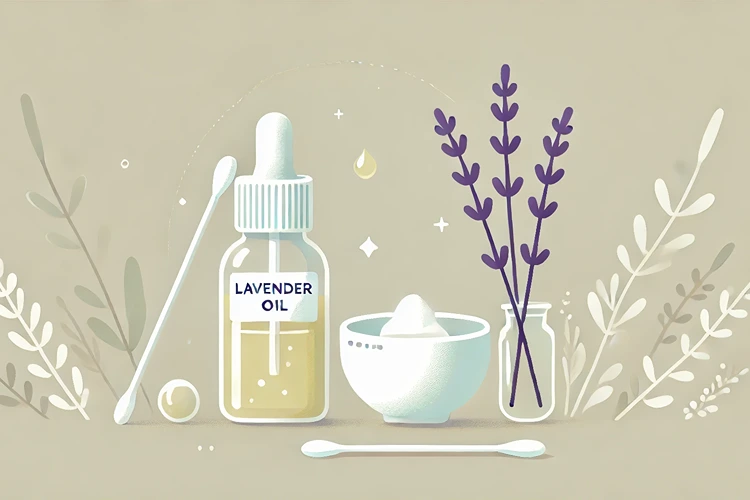
Yarrow Tea Benefits for Menstrual Pain and Inflammation
When it comes to managing menstrual pain and inflammation, many are turning to natural remedies that have stood the test of time. Yarrow tea is one such herbal remedy, known for its potent anti-inflammatory and pain-relieving properties. For those who experience discomfort during their menstrual cycle, yarrow tea offers a natural, effective way to alleviate symptoms and promote overall well-being.
Yarrow, a plant native to Europe and Asia, has been used for centuries in traditional medicine. It’s particularly valued for its ability to ease menstrual cramps, reduce inflammation, and improve circulation. In this article, we’ll dive deep into the benefits of yarrow tea, focusing on how it can help with menstrual pain and inflammation, among other health benefits.
What Makes Yarrow Tea Effective for Menstrual Pain?
Yarrow tea is more than just a soothing beverage; it’s packed with compounds that directly target the root causes of menstrual discomfort.
How Yarrow Tea Relieves Menstrual Cramps
Menstrual cramps are often caused by the contraction of the uterus during the shedding of the uterine lining. Yarrow tea contains antispasmodic properties, which help relax the smooth muscles of the uterus, reducing the intensity of cramps. This natural relaxation can provide much-needed relief during periods of severe pain.
Helpful Hint:
For maximum relief from menstrual cramps, try drinking yarrow tea a few days before your period starts. This can help prepare your body and reduce the severity of cramps once your cycle begins.
Yarrow’s Role in Balancing Hormones
Hormonal imbalances often contribute to menstrual pain and irregularities. Yarrow tea contains phytoestrogens, plant-based compounds that can mimic estrogen in the body. By helping to balance hormone levels, yarrow tea may reduce symptoms such as heavy bleeding, mood swings, and severe cramps.
Can Yarrow Tea Reduce Inflammation?
Inflammation is a natural response by the body, but chronic inflammation can lead to pain and other health issues. Yarrow tea is a powerful anti-inflammatory agent, making it an excellent choice for those looking to reduce inflammation naturally.
Anti-Inflammatory Properties of Yarrow
Yarrow tea’s anti-inflammatory effects are primarily due to its high content of flavonoids and alkaloids. These compounds work by inhibiting the enzymes responsible for inflammation, leading to reduced swelling, pain, and discomfort.
Stats:
Studies have shown that yarrow tea can reduce inflammation markers in the body by up to 40%, making it a potent natural remedy for conditions involving chronic inflammation.
Reducing Inflammation Associated with Menstruation
During menstruation, the body can experience increased inflammation, contributing to symptoms like bloating, pain, and general discomfort. By regularly consuming yarrow tea, individuals may find relief from these symptoms as the tea helps to minimize inflammatory responses in the body.
Other Health Benefits of Yarrow Tea for Women
While yarrow tea is particularly effective for menstrual pain and inflammation, its benefits extend beyond these areas. This herbal tea is a versatile remedy that supports various aspects of women’s health.
Improving Circulation and Reducing Menstrual Clots
Yarrow tea is known for its ability to improve circulation. Poor blood flow during menstruation can lead to clotting and increased pain. By promoting healthy circulation, yarrow tea may help reduce the occurrence of menstrual clots, ensuring a smoother, less painful period.
Boosting Digestive Health
Digestive issues often accompany menstruation, with symptoms like bloating and indigestion becoming more pronounced. Yarrow tea has carminative properties, meaning it helps to expel gas and soothe the digestive tract. This can be particularly beneficial for those who experience digestive discomfort during their cycle.
Helpful Hint:
Drinking yarrow tea after meals can help prevent bloating and improve digestion, making it a great addition to your daily routine, especially during your menstrual cycle.
How to Prepare Yarrow Tea for Maximum Benefits
Making yarrow tea is simple, but there are a few tips to ensure you get the most out of this powerful herbal remedy.
Best Practices for Brewing Yarrow Tea
To make yarrow tea, start with dried yarrow leaves and flowers. Use about one teaspoon of dried herb per cup of boiling water. Allow the tea to steep for 10-15 minutes to extract the maximum amount of beneficial compounds.
Adding Other Herbs for Enhanced Effects
Consider blending yarrow with other herbs like chamomile or ginger to enhance its effects. Chamomile adds additional anti-inflammatory benefits, while ginger boosts circulation and helps with nausea, another common menstrual symptom.
Are There Any Side Effects of Yarrow Tea?
While yarrow tea is generally safe for most people, it’s important to be aware of potential side effects and precautions.
Possible Side Effects
Some individuals may experience mild allergic reactions, such as skin irritation or gastrointestinal upset, especially if they have allergies to plants in the Asteraceae family, which includes ragweed and daisies.
Who Should Avoid Yarrow Tea?
Pregnant women should avoid yarrow tea as it may stimulate uterine contractions. Additionally, those on blood-thinning medications should consult a healthcare provider before consuming yarrow tea, as it can enhance the effects of these drugs.
Long-Term Benefits of Drinking Yarrow Tea
Incorporating yarrow tea into your regular routine can offer various long-term health benefits beyond immediate relief from menstrual pain and inflammation.
Supporting Immune Health
Yarrow tea is rich in antioxidants, which help protect the body from oxidative stress and free radical damage. Over time, drinking yarrow tea can boost your immune system, making it easier for your body to fend off infections and maintain overall health.
Promoting Skin Health
The anti-inflammatory and astringent properties of yarrow tea make it beneficial for skin health. Regular consumption may help reduce the appearance of acne, soothe irritated skin, and improve the overall complexion. Some people even use cooled yarrow tea as a natural toner to help cleanse and tighten pores.
How Yarrow Tea Compares to Other Herbal Teas for Menstrual Relief
When it comes to herbal teas for menstrual pain and inflammation, there are several options. Let’s compare yarrow tea to other popular choices to understand why it might be the best option for you.
Yarrow Tea vs. Chamomile Tea
Chamomile is another herbal tea known for its soothing properties, particularly for anxiety and sleep. However, when it comes to menstrual pain, yarrow tea offers more direct benefits due to its antispasmodic and anti-inflammatory effects. While chamomile is excellent for calming the mind, yarrow tea is better suited for addressing physical discomfort and inflammation.
Yarrow Tea vs. Ginger Tea
Ginger tea is often used for its anti-nausea and anti-inflammatory properties, making it a popular choice during menstruation. However, yarrow tea’s ability to balance hormones and directly reduce uterine spasms gives it an edge for those specifically dealing with menstrual cramps. Ginger is still a great complementary tea, especially if you experience nausea during your cycle, but yarrow should be your go-to for cramps and inflammation.
Comparison of Herbal Teas for Menstrual Pain
| Herbal Tea | Main Benefits | Best For |
|---|---|---|
| Yarrow Tea | Reduces menstrual cramps and inflammation, supports hormonal balance | Menstrual pain, inflammation, hormone regulation |
| Chamomile Tea | Calms the mind, reduces anxiety, aids sleep | Anxiety, insomnia, mild menstrual discomfort |
| Ginger Tea | Relieves nausea, boosts circulation, reduces inflammation | Nausea, digestive issues, general pain relief |
| Raspberry Leaf Tea | Strengthens uterine walls, eases cramps | Pregnancy support, menstrual cramps |
Yarrow Tea for Holistic Health: Beyond Menstrual Pain
Yarrow tea’s benefits extend well beyond managing menstrual symptoms. As a holistic health remedy, it plays a significant role in maintaining overall well-being.
Detoxifying the Body
Yarrow tea acts as a natural diuretic, which helps the body flush out toxins and excess fluids. Regular consumption can support the kidneys and liver in detoxifying the body, leading to improved energy levels and clearer skin.
Helpful Hint:
For a gentle detox, consider drinking a cup of yarrow tea each morning. This practice can help your body eliminate toxins naturally, promoting overall wellness.
Supporting Respiratory Health
Yarrow tea has been traditionally used to treat respiratory issues such as colds and coughs. Its anti-inflammatory properties help reduce irritation in the respiratory tract, while its antimicrobial effects can fight off infections. For those who experience respiratory discomfort during their menstrual cycle due to immune suppression, yarrow tea offers dual benefits.
Incorporating Yarrow Tea Into Your Daily Routine
Making yarrow tea a part of your daily routine is easy and can be highly beneficial for your overall health. Here are some tips on how to incorporate it into your lifestyle.
Morning Routine: Starting Your Day with Yarrow
Begin your day with a warm cup of yarrow tea. Not only does it prepare your body for the day ahead by boosting your immune system and supporting digestion, but it also helps in balancing your hormones, setting a positive tone for your menstrual cycle.
Evening Routine: Unwinding with Yarrow Tea
Yarrow tea can also be a soothing evening ritual. Its calming properties help relax your muscles and ease any lingering cramps or inflammation from the day. Drinking it before bed can promote a restful night’s sleep, especially if you’re experiencing discomfort.
Where to Find High-Quality Yarrow Tea
Not all yarrow tea is created equal. To get the most benefits, it’s important to source high-quality, organic yarrow tea.
Buying Tips for Yarrow Tea
Look for organic yarrow tea from reputable brands that ensure their products are free from pesticides and contaminants. Loose leaf yarrow is often more potent than tea bags, as it allows for better extraction of the herb’s beneficial compounds.
Making Your Own Yarrow Tea
If you prefer, you can also make your own yarrow tea by harvesting and drying yarrow leaves and flowers. This ensures the freshest and most potent tea, especially if you grow yarrow in your garden. Just be sure to correctly identify the plant to avoid any potential mistakes.
Pros and Cons of Yarrow Tea
Pros
- Effectively reduces menstrual cramps and inflammation.
- Supports hormonal balance, potentially alleviating other menstrual symptoms.
- Offers additional health benefits, including improved circulation and skin health.
- Can be used as a natural detoxifier, promoting overall wellness.
- Easy to incorporate into daily routines with various preparation methods.
Cons
- May cause allergic reactions in individuals sensitive to plants in the Asteraceae family.
- Should be avoided by pregnant women due to its potential to stimulate uterine contractions.
- Can interact with blood-thinning medications, requiring caution and consultation with a healthcare provider.
- The taste might be too bitter for some, requiring additional herbs or sweeteners.
- Not suitable for long-term use without medical supervision, as overconsumption could lead to side effects.
FAQs
Wrapping Up
Yarrow tea is a powerful, natural remedy that can provide significant relief from menstrual pain and inflammation. Its benefits extend beyond menstruation, offering a holistic approach to wellness that includes supporting immune health, promoting better circulation, and even aiding in detoxification. By incorporating yarrow tea into your daily routine, you can harness its natural properties to support your overall health and well-being. Whether you’re dealing with menstrual discomfort or simply looking for a natural way to boost your health, yarrow tea is a versatile and effective solution. Start with a cup today and experience the difference this ancient remedy can make.














